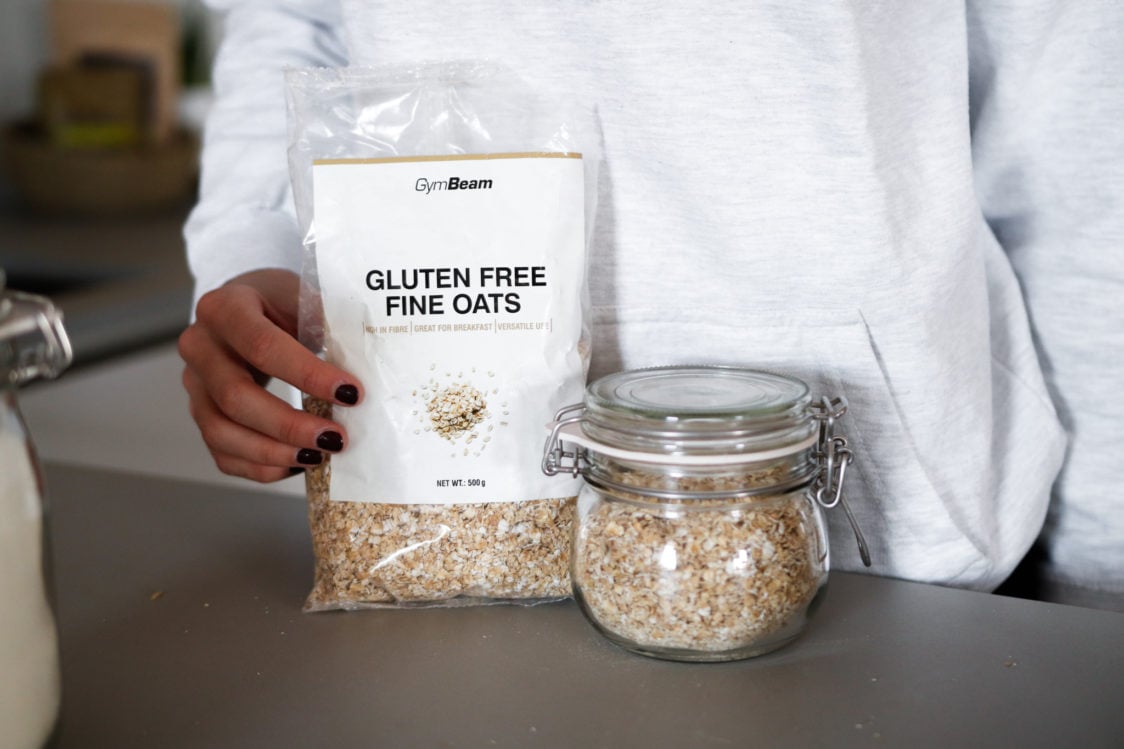Περιεχόμενα
Οι φυτικές ίνες είναι κάτι που σίγουρα έχετε ακούσει οι περισσότεροι από εσάς. Και αυτοί που ενδιαφέρονται έστω και λίγο για μια σωστή ισορροπία στη διατροφή τους γνωρίζουν ότι πρέπει να τις περιλαμβάνουν στο διαιτολόγιο τους και μην τις παραμελούν. Οι φυτικές ίνες επηρεάζουν διάφορες πτυχές της υγείας των ανθρώπων, συμπεριλαμβανομένης της υγείας της πέψης και του καρδιαγγειακού συστήματος, και μπορούν να ρυθμίσουν ανεπιθύμητες συνήθειες, όπως η επιθυμία για γλυκό. Ωστόσο, πολλοί δεν τις συμπεριλαμβάνουν στη διατροφή τους και έτσι δεν απολαμβάνουν τα οφέλη από τις δράσεις τους. Στο σημερινό μας άρθρο, θα ανακαλύψετε τι είναι οι φυτικές ίνες, τα οφέλη και τις πηγές τους.
What is dietary fibre?
Οι φυτικές ίνες είναι ουσιαστικά πολυσακχαρίτες. Κάθε πολυσακχαρίτης αποτελείται από πολλά μόρια μονοσακχαρίτη διατεταγμένα σε μακριές αλυσίδες. Σε αντίθεση με άλλους πολυσακχαρίτες (όπως το άμυλο στα δημητριακά), δεν μπορεί να διασπαστεί από τα ένζυμα του πεπτικού μας συστήματος. Έτσι, οι φυτικές ίνες διέρχονται από το πεπτικό σύστημα σε μια μορφή που είναι σχεδόν αμετάβλητη. Ωστόσο, αυτό το χαρακτηριστικό σε καμία περίπτωση δεν την καθιστά ένα άχρηστο θρεπτικό συστατικό, αλλά το ακριβώς αντίθετο μάλιστα. Οι φυτικές ίνες δεν είναι ωφέλιμες μόνο για τη λειτουργία του πεπτικού συστήματος, αλλά και για άλλες παραμέτρους, όπως για τη διατήρηση των επιπέδων σακχάρου στο αίμα, το ανοσοποιητικό σύστημα, καθώς επίσης και το εντερικό μικροβίωμα, καθώς διέρχονται κατά μήκος του γαστρεντερικού σωλήνα.
Animal products don’t have fibre. Only plant-based foods contain it naturally. For instance, cereals, legumes, fruits, vegetables, nuts and seeds are some of their sources.
Having enough fibre in the diet in a form other than the aforementioned foods is not a problem nowadays. On the market, there are nutritional supplements that can support the consumption of fibre. The selection includes, for instance, psyllium, apple fibre, or complex multi-source products containing fibre, such as Daily Fiber.

What types of fibre are there?
Σε αντίθεση με ό,τι πιστεύουν οι περισσότεροι, οι φυτικές ίνες δεν είναι ένα απλώς ένα θρεπτικό συστατικό που προσφέρει ποικίλα πλεονεκτήματα για την υγεία μας. Πίσω από αυτόν τον όρο κρύβονται διάφορα είδη φυτικών ινών. Επίσης τα χαρακτηριστικά τους και οι δράσεις τους στη υγεία μας είναι πολλαπλές. Έχετε ακούσει ποτέ για την κυτταρίνη, την ινουλίνη και την πηκτίνη; Αυτά τα τρία είναι μόνο μερικά από τα πολλά συστατικά των φυτικών ινών.
Με βάση τις ιδιότητές τους, οι φυτικές ίνες χωρίζονται σε δύο κατηγορίες: τις διαλυτές και τις αδιάλυτες. Διάφοροι συνδυασμοί και αναλογίες αυτών των δύο κατηγοριών μπορούν να βρεθούν στα τρόφιμα που καταναλώνουμε. Για παράδειγμα, τα φρούτα περιέχουν περισσότερες διαλυτές φυτικές ίνες από τα δημητριακά, τα οποία περιέχουν κυρίως αδιάλυτες φυτικές ίνες.
It’s crucial to keep in mind that there is a partial division between soluble and insoluble fibre. There are other instances where soluble fibre behaves in the digestive system similarly to insoluble fibre and vice versa. [3]
Αυτή η διάκριση ωστόσο, είναι αρκετή ώστε να μας βοηθήσει να κατανοήσουμε την λειτουργία, καθώς επίσης και τις επιδράσεις των φυτικών ινών. Τι διακρίνει λοιπόν τις διαλυτές από τις αδιάλυτες ίνες;

1. Insoluble fibre
All types of insoluble fibre serves as a scrub brush for the colon. Because people cannot digest it, it passes through the digestive tract in its entirety. It binds water along the way, increasing its volume while also accelerating and facilitating the flow of digested substances through the digestive tract. [3]
How much energy does insoluble fibre have?
Because the digestive enzymes cannot digest fibre, it passes through the digestive tract almost untouched. It provides no energy and has an energy value of 0 kcal. Furthermore, 1 g of insoluble fibre can prevent the absorption of nutrients with an energy value of about 7 kcal on average. [15]
Main sources of insoluble fibre
Cereals are the primary sources of insoluble fibre. This is because fibre is a key component of the cereal grain’s upper layers. However, there is a lot of insoluble fibre in nuts, legumes, and root vegetables. [2]
Typical representatives of insoluble fibre
Τυπικά παραδείγματα χαρακτηριστικών αδιάλυτων φυτικών ινών αποτελούν η κυτταρίνη, η ημικυτταρίνη και άλλες.
2. Soluble fibre
Fibre, which is water-soluble, expands in the digestive tract and takes on a gel consistency. This mass slows digestion, making you feel fuller for longer. When it reaches the large intestine, intestinal bacteria partially digest and process it. Short-chain fatty acids (SCFA), for example, are produced by intestinal bacteria and replenish the intestinal wall. They thus serve to prevent the passage of microorganisms into the blood or strengthen the intestinal wall’s resistance to inflammation. [3]
How much energy does soluble fibre contain?
Since some of the substances created by bacteria are taken into the blood from the large intestine, this type of fibre also provides the body with a small amount of energy. Fibre’s energy value is thus not 0 kcal, however, it is stated that 1g of fibre amounts to about 2 kcal (8 kJ). This is an average number because different types of fibre can vary. [4]
The main sources of soluble fibre
Οι διαλυτές φυτικές ίνες βρίσκονται σε υψηλότερη συγκέντρωση στα φρούτα και τα λαχανικά.
Typical representatives of soluble fibre
- pectin – found in fruit; apples are a good source.
- inulin – used to make the famed chicory syrup.
- glucomannan – derived from konjac root and is offered not only as a nutritional supplement that aids in appetite reduction, but also in the form of calorie-free kojac pasta.
- psyllium
Should you prefer one type of fibre?
Ίσως οι επιδράσεις των διαλυτών και αδιάλυτων ινών φαίνονται εντελώς αντίθετες. Οπότε, ποιές είναι καλύτερες; Διαλυτές φυτικές ίνες που επιβραδύνουν την πέψη ή αδιάλυτες φυτικές ίνες που σας κρατούν χορτάτους και προάγουν την κένωση του στομάχου; Η αλήθεια είναι ότι ένας άνθρωπος χρειάζεται και τις δύο μορφές φυτικών ινών τόσο για τη συνολική υγεία όσο και για την ευεξία του πεπτικού συστήματος.
Ευτυχώς, τα περισσότερα γεύματα περιλαμβάνουν συνδυασμό και των δύο μορφών φυτικών ινών. Έτσι λοιπόν αρκεί να εστιάζουμε στην ποικιλία. Μπορείτε εύκολα να επιτύχετε μια ισορροπία μεταξύ των επιδράσεων των διαλυτών και των αδιάλυτων φυτικών ινών εάν εναλλάσσετε τις πηγές τους.
Μπορεί να σας ενδιαφέρουν, επίσης, αυτά τα προϊόντα:
What effects does fibre have on health?
1. Supports digestion
Fibre is an essential component of healthy, well-functioning digestion. Because of its capacity to bind water, its insoluble component considerably increases its volume. As a result, it has the greatest effect on small intestine peristalsis (intestinal movements) and facilitates the flow of digested contents through the intestine. As a result, the increased volume of stool in the large intestine improves the regularity of stomach emptying. When it comes to preventing or treating constipation, one of the most important factors to consider is the fibre content of your diet. [3,4]
2. Works as a prebiotic and nourishes intestinal microbiota
Οι ίνες, ιδίως οι διαλυτές ίνες, θεωρούνται πολύ σημαντικές λόγω της ευεργετικής τους επίδρασης στην εντερική μικροχλωρίδα η οποία αποτελείται από μια μεγάλη ποικιλία μικροοργανισμών (βακτήρια, ζυμομύκητες, ιοί κ.λπ.) που ζουν στο πεπτικό μας σύστημα.
Probiotics are beneficial intestinal bacteria that can be received from food (for example, fermented milk products, fermented vegetables, etc).
Οι φυτικές ίνες, από την άλλη, λειτουργούν ως πρεβιοτικά. Πρόκειται για ουσίες που περιέχουν σάκχαρα με τα οποία τρέφονται τα ωφέλιμα βακτήρια του εντέρου. Τα σάκχαρα αυτά είναι ζωτικής σημασίας για την ανάπτυξη και την αναπαραγωγή των ωφέλιμων βακτηρίων του εντέρου.
Οι φυτικές ίνες βελτιώνουν τη σύνθεση της εντερικής μικροχλωρίδας βοηθώντας στην ανάπτυξη χρήσιμων και βοηθητικών μικροοργανισμών. Ωστόσο, τα «καλά» βακτήρια και τους ζυμομύκητες δεν ωφελούν μόνο με το να δημιουργούν καλύτερες συνθήκες αναπαραγωγής, αλλά σε μεγαλύτερες ποσότητα, μπορούν επίσης να «εξουδετερώσουν» τα ανεπιθύμητα είδη βακτηρίων τα οποία μπορούν να προκαλέσουν προβλήματα στη υγεία μας.

Several tens to hundreds of trillions of bacteria live in the digestive tract. One needs to consume foods that feed good bacteria sufficiently for it to predominate. The bacteria then generates short-chain fatty acids, abbreviated SCFA (e.g. butyric acid or propionic acid).
Αυτά τα λεγόμενα προϊόντα ζύμωσης αποτελούν την κύρια πηγή θρεπτικών ουσιών για τα κύτταρα του παχέος εντέρου. Διατηρούν έτσι την υγεία και την ακεραιότητα του εντερικού τοιχώματος προστατεύοντας το για παράδειγμα από τις φλεγμονώδεις αντιδράσεις.
Ταυτόχρονα, η ακεραιότητα και η μη διαπερατότητα του τοιχώματος του εντέρου περιορίζουν την είσοδο μικροοργανισμών και ξένων ουσιών στο αίμα (όταν συμβαίνει αυτό, το φαινόμενο ονομάζεται αυξημένη διαπερατότητα του εντέρου – το λεγόμενο Σύνδρομο Διαρρέοντος Εντέρου). Επιπλέον, τα SCFA εμποδίζουν την ανάπτυξη τοξικών ενώσεων στην πεπτική οδό, όπως η αμμωνία και οι αμίνες.
However, the effects of SCFA do not stop at the digestive tract. They also appear to have an appetite suppressant effect, can improve immunological function, and have anti-inflammatory properties. Thus, the proper composition of the intestinal microbiota affects human health on multiple levels [1,4,5,6]
3. Helps to avoid cancerous diseases of the digestive system
Fibre is mostly linked to a lower risk of colon cancer. According to the World Health Organization, colorectal cancer (colon cancer) is the third most frequent cancer worldwide and the second-leading cause of death among cancer diseases. [11]
The previously noted prebiotic effect of fibre is likely to play a major role. Fatty acids generated by intestinal bacteria provide energy to colon cells and so support intestinal wall health. Fibre accelerates the flow of digested food through the intestine, which lowers the time that potentially dangerous substances act on the intestinal mucosa. Furthermore, fibre has the ability to bind carcinogenic substances (that are involved in the development of cancer). [3,4]
4. Affects the blood sugar level
Οι φυτικές ίνες μειώνουν τον γλυκαιμικό δείκτη των τροφών. Αυτό σημαίνει ότι επιβραδύνουν την απορρόφηση της γλυκόζης από το πεπτικό σύστημα και την μετέπειτα μταφορά της στην αιματική κυκλοφορία (ταυτόχρονα προκαλούν την έκκριση μικρότερης ποσότητας ινσουλίνης). Ως αποτέλεσμα, υπάρχει μικρότερη αύξηση του σακχάρου στο αίμα (γλυκαιμία) μετά από ένα γεύμα. Οι διαλυτές φυτικές ίνες δρουν κατά κύριο λόγο με αυτό τον τρόπο.
Οι διακυμάνσεις των επιπέδων σακχάρων στο αίμα θα πρέπει να διατηρούνται υπό έλεγχο, ειδικά στα άτομα με σακχαρώδη διαβήτη, ώστε να αποφευχθούν ενδεχόμενες βλάβες στα αιμοφόρα αγγεία ως απόρροια των υψηλών επιπέδων σακχάρου στο αίμα.
More stable glycaemia is also beneficial for healthy people. After a meal, an excessive rise in blood sugar levels causes a sudden drop. At this point, the body needs a quick supply of energy and frequently “asks” for it through increased sweet cravings. A fibre-rich diet, on the other hand, can prevent glycaemic fluctuations, which can help lessen sweet cravings and potentially help you lose weight. [2,9]
It is sufficient to pay attention to a complex and balanced meal composition for long-term and stable levels of glycaemia during the day. The article What Is a Healthy Diet and How to Learn to Eat Healthily will explain how to prepare such meal.
Regular physical activity is also essential for maintaining healthy blood sugar levels. You can read about the specific impact of the movement in the article Why Do Sports and Exercise? Stronger Immunity, Heath and 8 Other Reasons.

5. Fibre also affects the health of the heart and blood vessels
Το διαλυτό συστατικό των φυτικών ινών είναι κυρίως υπεύθυνο για την ωφέλιμη δράση τους στην υγεία του καρδιαγγειακού συστήματος. Το συστατικό αυτό προσκολλάται στο έντερο μαζί με τα χολικά οξέα, τα οποία χάρη στη ζελατινώδη μορφή που έχουν, μπορούν να μεταφέρουν χοληστερόλη. Τα χολικά οξέα και η χοληστερόλη, μαζί με τις φυτικές ίνες, αποβάλλονται από το σώμα. Έτσι λοιπόν, όταν το σώμα χρειάζεται χοληστερόλη (για παράδειγμα, για τη δημιουργία κυτταρικών μεμβρανών), αναγκάζεται να σκάψει βαθύτερα στα αποθέματα χοληστερόλης του διαθέτει, διατηρώντας με αυτό τον τρόπο τα επίπεδα χοληστερόλης σε ένα φυσιολογικό εύρος.
A lower chance of developing atherosclerosis (hardening or clogging of blood vessels), which is the basis for the development of myocardial infarction or stroke, is connected with optimal cholesterol levels. [3]
6. Helps in weight loss by regulating energy intake from food
Είναι γνωστό ότι σε κάθε δίαιτα αδυνατίσματος δίνεται έμφαση στις φυτικές ίνες. Αυτό συμβαίνει ως επί το πλείστον λόγω της ιδιότητας τους να ενισχύουν το αίσθημα κορεσμού. Οι φυτικές ίνες αυξάνουν την πληρότητα του στομάχου και επιβραδύνουν τη γαστρική κένωση. Ως αποτέλεσμα, η αίσθηση της πείνας έρχεται αργότερα.
Κατά συνέπεια, ένα άτομο λαμβάνει λιγότερη ενέργεια από το φαγητό ως αποτέλεσμα του υψηλότερου επιπέδου κορεσμού που επιτυγχάνεται. Για παράδειγμα, μπορείτε εύκολα να είστε ευχαριστημένοι με μία μόνο φέτα ψωμί με ζαμπόν και τυρί αν το πρωινό σας περιλαμβάνει και ένα συνοδευτικό λαχανικών. Χωρίς τα λαχανικά, όμως, θα χρειαστείτε δύο φέτες ψωμί για να νιώσετε ικανοποιημένοι. Οι προσλαμβανόμενες θερμίδες από το πρωινό θα ήταν πολύ περισσότερες στο δεύτερο παράδειγμα.
Thus, fibre makes a great help in weight loss. In addition, eating a diet high in fibre can help avoid weight gain, potential obesity, and associated health issues. [2]
You can read more about tips to help you lose weight in the article The Simple Basics of Weight Loss: You’ll Be Surprised What Really Matters.

Which foods contain fibre?
Πολλοί άνθρωποι πιστεύουν ότι οι καλύτερες πηγές φυτικών ινών είναι τα λαχανικά και τα φρούτα, την ίδια στιγμή που αυτή η ομάδα τροφίμων έρχεται στην τρίτη θέση της κατάταξης των φυτικών προϊόντων.
1. Legumes
- In terms of fibre content, legumes are on the first place. They can contain up to 20 g of fibre per 100 g in raw state.
- However, man people do not eat legumes, so it is beneficial to include them, for instance, in a variety of soups or spreads, or add them to a salad. Another excellent substitute is legume pasta.
How much fibre do different types of legumes have on average?
Product (raw) | peas | red beans | chickpeas | red lentils | brown lentils |
|---|---|---|---|---|---|
| περιεκτικότητα σε φυτικές ίνες / 100 g | 22 γρ. | 15 γρ. | 12 γρ. | 11 g | 11 g |

2. Whole-grain cereals
- Whole-grain cereals rank second in terms of fibre content.
- Cereals in their natural form, such as rye, organic rice, wheat, barley, etc., are the source of fibre. Products manufactured from these cereals, such as bread, pasta, flakes (such as rye or oat flakes), porridge, etc., also include fibre.
- However, the product must be whole-grain in order for it to have fibre. Whole grain foods include the entire grain of the cereal, including the bran, which is high in fibre. White flour products, however, are free of these components.
How much fibre do various kinds of cereal contain on average?
Product (raw) | barley | oats | rye | wheat | natural rice |
|---|---|---|---|---|---|
| περιεκτικότητα σε φυτικές ίνες / 100 g | 16 γρ. | 11 g | 15 γρ. | 9 γρ. | 5 γρ. |

3. Fruits and vegetables
- In terms of fibre content, the aforementioned vegetables and fruits rank third. The fibre content ranges from approximately 1 to 7 g.
- Τα λαχανικά με την υψηλότερη περιεκτικότητα σε φυτικές ίνες είναι οι λαχανίδες, τα μπιζέλια και τα πράσινα φασόλια. Από την άλλή, στην αντίστοιχη θέση όσον αφορά τα φρούτα, αυτά με την μεγαλύτερη περιεκτικότητα είναι τα μούρα, όπως σμέουρα, σταφίδες και βατόμουρα.
How much fibre do some vegetables contain on average?
Product (raw) | peas | carrot | bean pods | broccoli | cabbage |
|---|---|---|---|---|---|
| περιεκτικότητα σε φυτικές ίνες / 100 g | 5,7 γρ. | 2,8 γρ. | 2,7 γρ. | 2,6 γρ. | 2,5 γρ. |
How much fibre do some fruits contain on average?
Product (raw) | raspberries | pear | kiwi | blueberries | apricots |
|---|---|---|---|---|---|
| περιεκτικότητα σε φυτικές ίνες / 100 g | 6,5 γρ. | 3,1 γρ. | 3 γρ. | 2,4 γρ. | 2 γρ. |

4. Nuts and seeds
- Nuts and seeds are also full of fibre. In the case of chia seeds, they can contain between 2 and 34 g of fibre per 100 g.
- Fibre content can reach extremely high levels. Their daily portion should, however, be less than that of the previously mentioned foods.
- Nuts and seeds are rich in both fat and energy. A 100 g serving of almonds contains up to 50 g of fat and 580 kcal (2420 kJ). In terms of energy content, the given amount is similar to a larger piece of lunch consisting of 150 g of meat and 200 g of rice, for example.
- Treat yourself to one small handful (about 30 g) of nuts and seeds per day, as this is the optimal amount. For example, if you eat 30 g of pistachios, you will get about 3.3 g of fibre (about 13% of your required daily intake).
How much fibre do some types of seeds and nuts contain on average?
Product (raw) | chia seeds | flax seeds | almonds | pistachios | hazelnuts | walnuts |
|---|---|---|---|---|---|---|
| περιεκτικότητα σε φυτικές ίνες/ 100 γρ | 34 γρ. | 27 γρ. | 13 g | 11 g | 9 γρ. | 7 g |

Πολλοί άνθρωποι στερούνται φυτικών ινών στη διατροφή τους. Το 2017 οι επιστήμονες ανακάλυψαν ότι οι ενήλικες στην Ευρώπη καταναλώνουν μεταξύ 14 με 25 γρ. Σύμφωνα με την Ευρωπαϊκή Αρχή για την Ασφάλεια των Τροφίμων (EFSA), η συνιστώμενη πρόσληψη φυτικών ινών πρέπει να είναι τουλάχιστον 25 g.
The recommendations for the US population (Dietary Guidelines for Americans) talk about 28 to 34 g, depending on age and gender. Every country has its own recommendations, but they all fall between 25 and 35 g of fibre per day. [4,7,8,10]
The following foods contain the recommended 25 g of fibre: 50 g of oats (this serving has about 7 g of fibre), one large apple (about 3 g of fibre), 70 g of whole-wheat pasta (raw, about 6 g of fibre), 100 g of carrots (about 3 g of fibre), and 100 g of rye bread (approx. 6 g of fibre). [12]

How to eat more fibre and get the necessary amount?
- Choose whole-grain food such as whole-grain bread and pasta.
- Try other cereals, such as barley, oats, and rye.
- Try pseudo-cereals like buckwheat, quinoa, or amaranth.
- Replace white flour in baking with whole wheat, rye, buckwheat, and other whole grains.
- Consume at least 400 g of veggies and fruits per day. The proportion of vegetables should be greater than that of fruit.
- Do not peel fruits and vegetables. The peel of fruits and vegetables, such as apples, pears, and cucumbers, contains the majority of the fibre.
- Include legumes at least twice a week in your diet. They can be added to a soup, spread, or salad.
- Regularly consume nuts and seeds. You can also use nut butter instead of nuts.
- You can also improve your fibre intake with supplements such as psyllium, apple fibre, glucomannan, or the complex supplement called Daily Fiber.
- Examine the fibre content on food labels. A food containing at least 3 g of fibre per 100 g is considered a fibre source, according to the regulations. Food is said to have a high fibre content if it contains 6 g or more of it. [13, 14]
Possible side effects of high fibre intake
Για τις φυτικές ίνες ισχύει η φράση “παν μέτρον άριστον “. Κανείς δεν θα μπορούσε να αμφισβητήσει τα οφέλη που προσφέρουν στην υγεία τα συνιστώμενα 25-30 g , ωστόσο αν το παρακάνετε με την ποσοότητα, μπορεί να εκδηλωθούν προβλήματα. Η κατανάλωση μιας ποσότητας φυτικών ινών 50-60 g την ημέρα θεωρείται υπερβολική. Μπορεί να σας παρουσιαστούν δυσκολίες, ιδιαίτερα εάν συνεχίσετε την υψηλή κατανάλωσή τους για παρατεταμένο χρονικό διάστημα.
- Gas and abdominal pain can result from eating too much fibre. This may also occur if you rapidly increase fibre intake.
- High consumption may induce diarrhoea and loose stool in some people.
- However, consuming too much fibre can also lead to constipation. Especially if your water intake is insufficient. If you don’t drink much water, the amount of fibre that is within the range of the recommended intake may also contribute to constipation. So be sure to drink between 30 and 45 ml of water per kilogram of body weight.
- Long-term excessive intake of fibre can lead to reduced absorption of minerals, such as iron, zinc or calcium.
- At the same time, absorption of some medications can be reduced. [3]
Όπως καταλαβαίνετε, το να καταναλώνετε υπερβολικά πολλές φυτικές ίνες δεν αποτελεί και τόσο καλή ιδέα, παρόλο που αποτελούν ένα υγιεινό στοιχείο της διατροφής μας. Αν δεν συμπεριλαμβάνετε αρκετές φυτικές ίνες στη διατροφή σας, προσπαθήστε να αυξήσετε την πρόσληψη τους, αλλά μέσα σε φυσιολογικά όρια. Δώστε προτεραιότητα στην κατανάλωση τροφών με υψηλή περιεκτικότητα σε φυτικές ίνες και, φυσικά, μπορείτε πάντα να καταφύγετε τη λύση των συμπληρωμάτων διατροφής. Από την άλλη πλευρά, αν αντιμετωπίζετε κάποιες από τις αρνητικές επιπτώσεις που σας προαναφέραμε καλό θα ήταν να εξετάσετε αν έχετε καταναλώσει υπερβολική ποσότητα φυτικών ινών.
If you’re bothered by bloating, check out our article What Causes a Bloated Stomach and How to Get Rid of It?
What should you remember?
Δεν υπάρχει αμφιβολία ότι οι φυτικές ίνες είναι καλές για την υγεία μας. Επομένως, δεν πρέπει να αμελείτε την πρόσληψή τους. Στοχεύστε στο να καταναλώνετε τουλάχιστον 25 g φυτικών ινών την ημέρα αν θέλετε να βοηθήσετε την διαδικασία της πέψης, την υγεία του πεπτικού σας συστήματος και τη σύνθεση της μικροχλωρίδας του εντέρου σας ή να αποτρέψετε τα σκαμπανεβάσματα των επιπέδων σακχάρου στο αίμα σας. Μπορείτε να πετύχετε αυτό το στόχο βάζοντας στη διατροφή σας περισσότερα όσπρια, δημητριακά ολικής αλέσεως, λαχανικά, φρούτα και ξηρούς καρπούς.
Αν βρήκατε αυτό το άρθρο χρήσιμο, μη διαστάσετε να το μοιραστείτε με τους φίλους και τους γνωστούς σας.
[1] ALTHANI, A.A. et al. Human Microbiome and its Association With Health and Diseases. – https://onlinelibrary.wiley.com/doi/abs/10.1002/jcp.25284
[2] BARBER, T.M. et al. The Health Benefits of Dietary Fibre.– https://www.ncbi.nlm.nih.gov/pmc/articles/PMC7589116/
[3] DUYFF, R.L. Complete Food & Nutrition Guide. . New York: Academy of Nutrition and Dietetics, 2017. ISBN 978-0-544-52058-5.
[4] EFSA PANEL ON DIETETIC PRODUCTS, NUTRITION, AND ALLERGIES (NDA) Scientific Opinion on Dietary Reference Values for carbohydrates and dietary fibre. – https://www.efsa.europa.eu/en/efsajournal/pub/1462
[5] GUAN, Z.-W. et al. Soluble Dietary Fiber, One of the Most Important Nutrients for the Gut Microbiota. – https://www.ncbi.nlm.nih.gov/pmc/articles/PMC8624670/
[6] CHAMBERS, E.S. et al. Role of Gut Microbiota-Generated Short-Chain Fatty Acids in Metabolic and Cardiovascular Health. – https://www.ncbi.nlm.nih.gov/pmc/articles/PMC6244749/
[7] MILLER, K.B. Review of whole grain and dietary fiber recommendations and intake levels in different countries. – https://doi.org/10.1093/nutrit/nuz052
[8] STEPHEN, A.M. et al. Dietary fibre in Europe: current state of knowledge on definitions, sources, recommendations, intakes and relationships to health. – https://www.cambridge.org/core/journals/nutrition-research-reviews/article/dietary-fibre-in-europe-current-state-of-knowledge-on-definitions-sources-recommendations-intakes-and-relationships-to-health/B263D1D7B3440DC9D6F68E23C2B4212F
[9] VERONESE, N. et al. Dietary fiber and health outcomes: an umbrella review of systematic reviews and meta-analyses. – https://pubmed.ncbi.nlm.nih.gov/29566200/
[10] USDA. 2020-2025 Dietary Guidelines.– https://www.dietaryguidelines.gov/sites/default/files/2020-12/Dietary_Guidelines_for_Americans_2020-2025.pdf
[11] WHO. Colorectal Cancer Awareness Month 2022 – IARC. – https://www.iarc.who.int/featured-news/colorectal-cancer-awareness-month-2022/>
[12] USDA. FoodData Central.– https://fdc.nal.usda.gov/fdc-app.html#/food-details/321360/nutrients
[13] EU Register of nutrition and health claims made on foods (v.3.6). – https://ec.europa.eu/food/safety/labelling_nutrition/claims/register/public/?event=search
[14] WHO | Healthy diet. – http://www.who.int/nutrition/publicatioAns/nutrientrequirements/healthydiet_factsheet/en/
[15] BAER J. DAVID et al. Dietary Fiber Decreases the Metabolizable Energy Content and Nutrient Digestibility of Mixed Diets Fed to Humans. – https://academic.oup.com/jn/article/127/4/579/4728747


Προσθέστε ένα σχόλιο